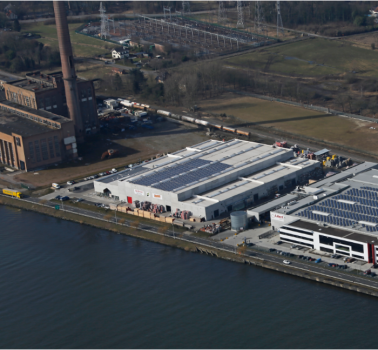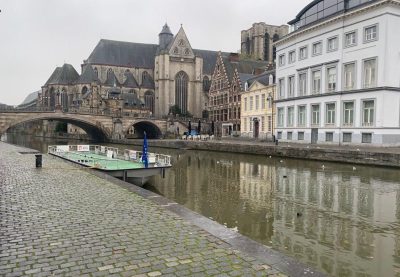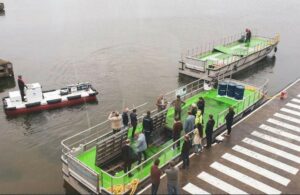Copyright © FOREMAST | Privacy Policy
Copyright ©2024 FOREMAST | Privacy Policy
Ghent is a specific medium-sized city counting approximately 250.000 inhabitants and 75.000 students, with an old mediaeval city centre and a fine-mazed waterway system. The test area includes a sea canal between Ghent and Terneuzen (Netherlands), canals, rivers, canals with tidal action with a wide range of infrastructure.



Ghent’s City Logistics Hubs synchronise barge arrivals with transport modes to align with Ghent’s sustainable goals. They efficiently unload cargo from inland waterways, aided by automated technology and upgraded infrastructure. In FOREMAST, the goal is to achieve a 20% increase in modal shift, making transport 20% more sustainable by 2030. Consortium efforts aim to shift goods from roads to water, contributing to a greener urban distribution.
Demonstrations environment: small waterway, lake, intra-urban
Simulation testing environment: small waterway, lake, intraurban. Coastal, estuary
Satellite-based data & services: Copernicus & Galileo / EGNOS
Simulate, design and implement a SFAZ based multimodal logistic solutions for cities and intra-urban applications that evidence shifting cargo from road to sustainable waterborne transport using the Digital Twin platform
Test and explore increased vessel automation, specifically investigating: a) impact of hydrodynamic effects on manoeuvrability in shallow waters, b) mathematical models for platooning, c) simulation and safety assessment for mixed traffic d) high-tech automation-human interaction
Improve energy resilience with power solution innovations, including floating batteries, model of swap battery systems, H2 solutions for fuel cells in small Class I/II ships, and develop a refuelling station for several applications (swap system, H2 delivery).
Integrate SFAZ vessels in the synchromodal logistic chain with various transport modes. Simulate and test ship and shore digital twin solutions for fleet planning and network optimisation.
Simulate, design, and implement cutting-edge SFAZ-based multimodal logistic solutions for cities and intra-urban applications. Utilise the Digital Twining platform to shift cargo from roads to sustainable Waterborne Transport.
Improve energy resilience with power solution innovations, including floating batteries, swap battery systems, and H2 fuel cells for small ships. Develop a versatile refuelling station catering to applications like the Swap system and H2 delivery.
Seamlessly integrate SFAZ vessels into the synchromodal logistic chain, testing ship and shore digital twin solutions. Simulate and optimise fleet planning and network coordination.
The LL1 is taking the AVATAR vessel and giving it a sustainable makeover to create the ultimate SFAZ vessel.


The impact of hydrodynamic effects on manoeuvrability in shallow waters is explored using AVATAR vessels, incorporating real-life testing and continuous remote surveillance.
Mathematical models for platooning, with the master vessel under remote control and slave vessels closely monitored.
Simulation and safety assessment for mixed traffic, including fleet management, automated mooring system innovations, and enhanced situational awareness through monocular depth estimation.
Develop high-tech automation-human interaction for navigation and operational tasks, aligning with FOREMAST autonomy control architecture and interfaces.